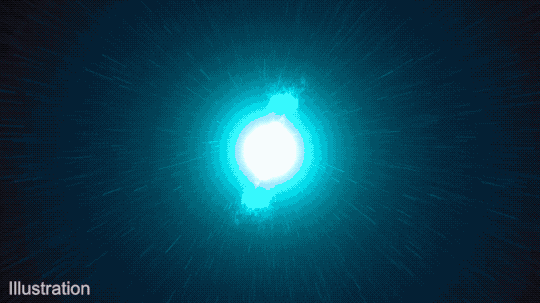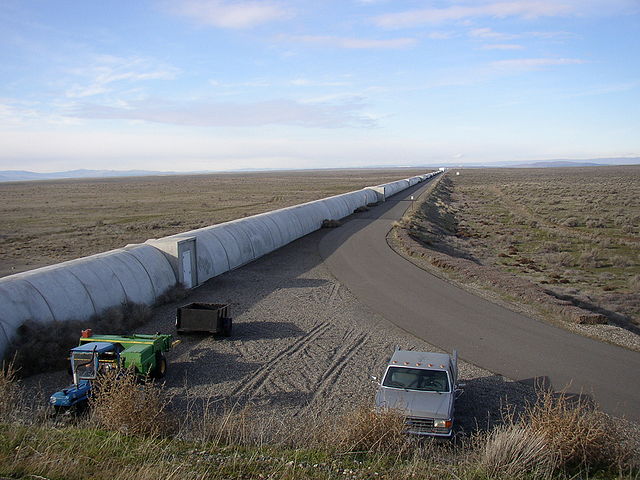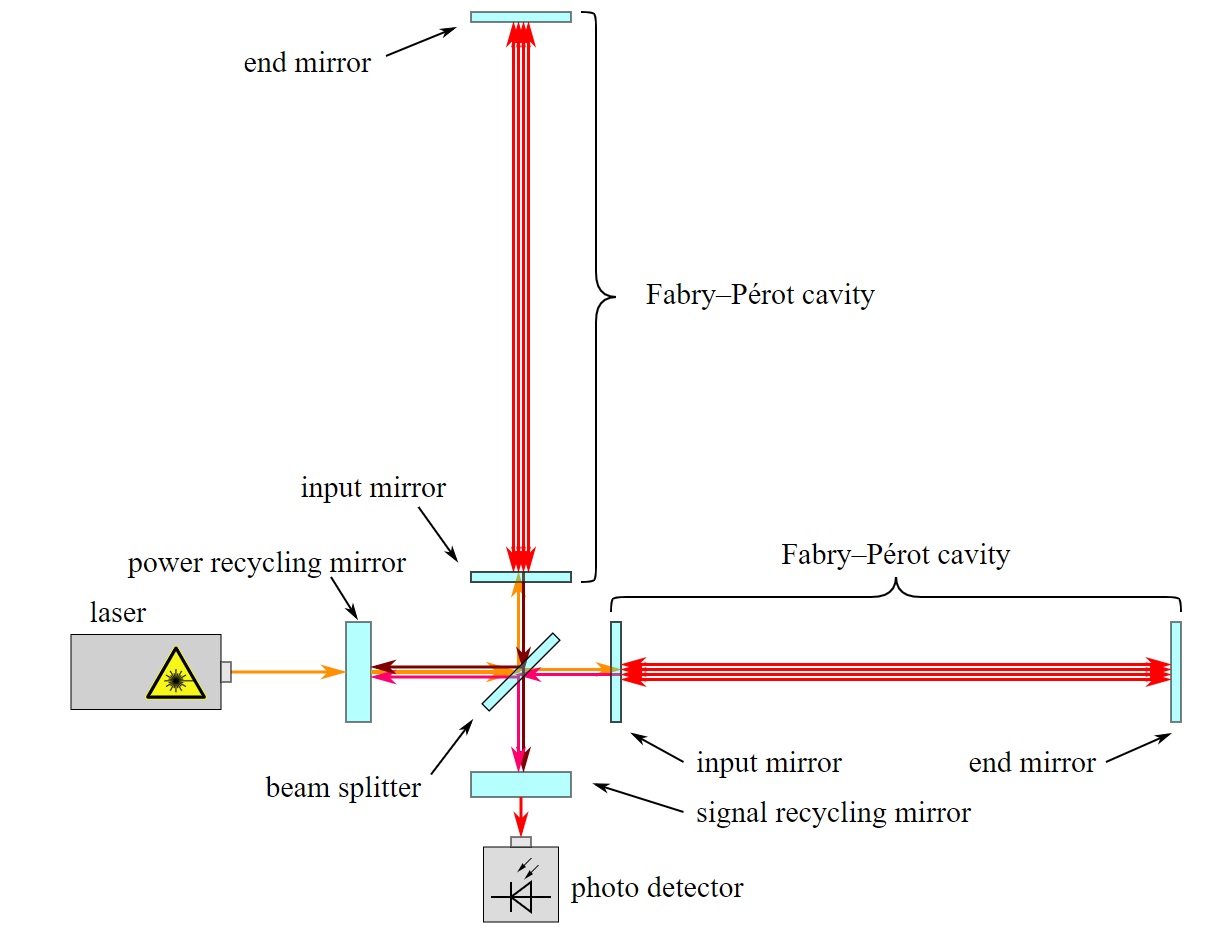
This article is motivated by the 2019 A level H2 physic exam papers in Singapore, which has a question on the measurement of gravitational waves.
The image above is an artist's impression of two black holes about to collide and generate gravitational wave. Before Einstein, who would imagine that gravity can show up as waves? Today, it has not only been detected, but even appeared in an A level physics exam paper!
Gravitational waves are ripples in the fabric of spacetime caused by some of the most violent and energetic processes in the universe. Predicted by Albert Einstein in 1916 as a part of his General Theory of Relativity, these waves provide a new way to observe cosmic events and have opened a new field of astrophysics. This exploration of gravitational waves involves both theoretical and experimental aspects, intertwining fundamental physics with groundbreaking technology.
Gravitational waves are ripples in the fabric of spacetime caused by some of the most violent and energetic processes in the universe. Predicted by Albert Einstein in 1916 as a part of his General Theory of Relativity, these waves provide a new way to observe cosmic events and have opened a new field of astrophysics. This exploration of gravitational waves involves both theoretical and experimental aspects, intertwining fundamental physics with groundbreaking technology.
Understanding Gravitational Waves
At their core, gravitational waves arise from the acceleration of massive objects. Just as moving electric charges produce electromagnetic waves, accelerating masses distort spacetime and produce gravitational waves. These waves travel at the speed of light and carry information about their origins, including the nature of the events that created them and the characteristics of the objects involved.
Gravitational waves are typically produced by cataclysmic astrophysical events, such as the collision of black holes or neutron stars. When two massive objects orbit each other, they create a dynamic distortion in spacetime. As these objects spiral closer, they emit gravitational waves, losing energy and angular momentum, which leads them to eventually merge.
The Nature of Gravitational Waves
Gravitational waves are transverse waves, similar to light waves. And similar to light, but they can propagate through vacuum. They come in two polarizations, often labeled as "plus" and "cross," which describe how the spacetime distortion stretches and compresses along different axes.
These polarisations can be visualized as changes in the distances between freely falling objects, which oscillate as a gravitational wave passes through.
Mathematically, gravitational waves can be described using the linearized form of Einstein’s field equations, which relate the geometry of spacetime to the distribution of matter and energy. The weak field approximation simplifies these equations, allowing us to express the waveforms of gravitational waves in terms of their amplitude and frequency.
Detection of Gravitational Waves
Detecting gravitational waves is an immense technological challenge due to their incredibly small effect on spacetime. For example, a passing gravitational wave can change the distance between two points by less than a fraction of the diameter of a proton. The first successful detection of gravitational waves occurred on September 14, 2015, by the Laser Interferometer Gravitational-Wave Observatory (LIGO), marking a significant milestone in physics and astronomy.
LIGO operates using a technique called interferometry. It consists of two large L-shaped detectors separated by about 3,000 kilometers, each with two perpendicular arms that are 4 kilometers long. A laser beam is split into two and sent down each arm. The beams reflect off mirrors and recombine. If a gravitational wave passes through, it changes the lengths of the arms slightly, causing an interference pattern that can be measured. The precision required for these measurements is extraordinary, often needing to detect shifts smaller than a billionth of a meter.
Sources of Gravitational Waves
The most significant sources of gravitational waves include:
1. Binary Black Hole Mergers: The merging of two black holes is one of the most powerful sources of gravitational waves. As they spiral inwards, they emit waves that increase in frequency and amplitude, a phenomenon known as "chirping."
2. Neutron Star Mergers: The collision of neutron stars not only produces gravitational waves but also leads to the creation of heavy elements through processes like kilonovae. The signals from such events provide valuable information about the nature of nuclear matter.
(Wikipedia : A kilonova (also called a macronova) is a transient astronomical event that occurs in a compact binary system when two neutron stars or a neutron star and a black hole merge.)
3. Asymmetric Supernova Explosions: The gravitational wave emissions from the collapse of massive stars can also be significant, particularly if the explosion is asymmetric.
4. Rapidly Rotating Neutron Stars: Pulsars, or rapidly spinning neutron stars, can emit continuous gravitational waves if they have an asymmetric shape or if they are wobbling.
Theoretical Implications
The study of gravitational waves has profound implications for our understanding of fundamental physics. They serve as a tool for testing General Relativity in extreme conditions. Observations of gravitational waves provide insights into the behavior of matter under extreme gravitational fields, pushing the boundaries of our understanding of fundamental forces.
Moreover, gravitational waves can inform us about the rate of expansion of the universe, known as the Hubble constant. Events like the binary neutron star merger observed in 2017 offered a unique opportunity to measure distances in the universe via the electromagnetic counterpart, leading to improved estimates of cosmic expansion.
Future Prospects
The field of gravitational wave astronomy is still in its infancy. Upcoming detectors, such as the Einstein Telescope in Europe and the Cosmic Explorer in the United States, promise to increase sensitivity and explore a broader range of frequencies. Space-based observatories like LISA (Laser Interferometer Space Antenna) aim to detect low-frequency gravitational waves, allowing scientists to observe sources like supermassive black hole mergers and explore the early universe.
Furthermore, gravitational wave astronomy may eventually lead to a deeper understanding of dark matter and dark energy, both of which remain elusive. As technology advances, the potential for new discoveries grows exponentially.
Gravitational waves represent a revolutionary leap in our ability to observe and understand the universe. From confirming aspects of General Relativity to opening new avenues in cosmology, they offer a unique perspective on some of the most fundamental questions in physics. The ongoing research and technological developments promise to reveal more about the universe's workings, perhaps even answering questions that have puzzled humanity for centuries. As we continue to detect and analyse these enigmatic ripples in spacetime, we inch closer to unravelling the mysteries of our cosmos.
The Measurement of gravitational waves

The detection and measurement of gravitational waves mark one of the most significant advancements in modern physics and astronomy. These ripples in spacetime, predicted by Albert Einstein’s General Theory of Relativity, provide a new lens through which we can observe and understand the universe. This article explores the principles behind measuring gravitational waves, the technologies used, the challenges faced, and the implications of these measurements for science.
Understanding Gravitational Waves
Gravitational waves are produced by the acceleration of massive objects, particularly during catastrophic events such as the merger of black holes or neutron stars. As these massive bodies move and distort spacetime, they create ripples that propagate outward at the speed of light. The first direct detection of gravitational waves occurred on September 14, 2015, by the Laser Interferometer Gravitational-Wave Observatory (LIGO), confirming a century-old prediction and heralding a new era of astrophysical observation.
The Principles of Measurement
The measurement of gravitational waves relies on the concept of interferometry, which detects minute changes in distance caused by the passing waves. Gravitational waves cause oscillations in spacetime, leading to tiny variations in the distances between points in space. To capture these changes, scientists utilise highly sensitive instruments that can measure fluctuations at scales much smaller than the diameter of a proton.
Interferometry
The core technology used in gravitational wave detectors like LIGO is laser interferometry. The basic setup involves splitting a laser beam into two parts, directing each part down long perpendicular arms (typically several kilometers long), and then reflecting the beams back to a central point. When a gravitational wave passes through, it alters the length of one arm relative to the other, resulting in a shift in the interference pattern when the beams recombine.
Key Components of Interferometers
1. Laser Source: A stable and coherent laser beam provides the initial light source for the experiment.
2. Beam Splitter: This optical component splits the incoming laser beam into two separate beams traveling along different paths.
3. Mirrors: Highly reflective mirrors are positioned at the end of each arm to reflect the laser beams back toward the beam splitter.
4. Photo-detector: After the beams recombine, they are directed to a photodetector, which measures the intensity of the combined light. Changes in the interference pattern indicate a passing gravitational wave.

Sensitivity and Calibration
The sensitivity of these detectors is crucial. The changes in arm lengths caused by gravitational waves are incredibly small, often on the order of one part in 10^{21} meters. To achieve this level of sensitivity, LIGO employs several techniques:
• Optical Cavities: By placing the mirrors in a configuration known as an optical cavity, the laser light bounces back and forth, effectively increasing the interaction time and enhancing sensitivity.
• Suspension Systems: The mirrors are suspended using sophisticated systems designed to isolate them from environmental noise, such as seismic activity or vibrations from nearby traffic.
• Active Feedback Control: Continuous monitoring and adjustment help maintain the precision of measurements, compensating for environmental factors that might affect the data.
The Challenges of Measurement
Measuring gravitational waves is fraught with challenges. The extreme sensitivity required makes detectors susceptible to various noise sources, which can obscure genuine signals.
Types of Noise
1. Seismic Noise: Ground vibrations from earthquakes, traffic, and even ocean waves can interfere with measurements. To combat this, LIGO is located in remote areas and uses vibration isolation systems.
2. Thermal Noise: Fluctuations in temperature can cause materials to expand and contract, affecting measurements. This is managed through careful material selection and environmental controls.
3. Quantum Noise: The fundamental nature of light means that there is inherent uncertainty in measuring light's position and momentum, contributing to noise. Researchers explore techniques like squeezing to reduce this noise.
4. Human-made Noise: Even equipment in the vicinity can generate noise. Detectors are designed to minimise such interference and identify noise sources for accurate data interpretation.
Data Analysis
Once potential gravitational wave signals are detected, the data undergoes rigorous analysis to confirm their authenticity and characterize their properties. This process involves:
Signal Identification
Sophisticated algorithms search for signals consistent with predicted waveforms from astrophysical events. The detection involves correlating the measured data with theoretical models to distinguish genuine gravitational wave signals from noise.
Parameter Estimation
Upon identifying a potential signal, researchers estimate parameters such as the masses of the colliding objects, their distance from Earth, and the orientation of their spins. This involves complex mathematical modelling and simulation to fit the observed signal to theoretical predictions.
Multi-Messenger Astronomy
In cases where gravitational waves are detected alongside electromagnetic signals (like gamma-ray bursts from neutron star mergers), scientists employ a multi-messenger approach. This method combines information from gravitational waves and electromagnetic observations to gain a more comprehensive understanding of cosmic events.
The Impact of Gravitational Wave Measurements
The successful measurement of gravitational waves has profound implications for multiple fields of science.
Astrophysics
Gravitational waves provide insights into the most energetic events in the universe. For instance, the detection of a binary black hole merger revealed information about black hole formation, mass distribution, and the nature of black holes themselves.
Cosmology
Gravitational waves can also inform cosmological models. By measuring distances to events like neutron star mergers, scientists can refine estimates of the universe’s expansion rate, the Hubble constant, and other fundamental cosmological parameters.
Fundamental Physics
The study of gravitational waves challenges existing theories and may lead to new physics. For example, measuring gravitational waves in extreme conditions allows researchers to test General Relativity under scenarios that cannot be replicated in laboratories.
Future Developments
The measurement of gravitational waves has transformed our understanding of the universe, unveiling cosmic events that were previously hidden from view. Through advanced technologies and innovative techniques, scientists have opened a new frontier in astrophysics, paving the way for future discoveries. As we refine our measurement capabilities and expand our observational horizons, the insights gained from gravitational wave astronomy will continue to reshape our understanding of the universe and our place within it.
You can learn these concepts and more at Dr Hock's maths and physics tuition.